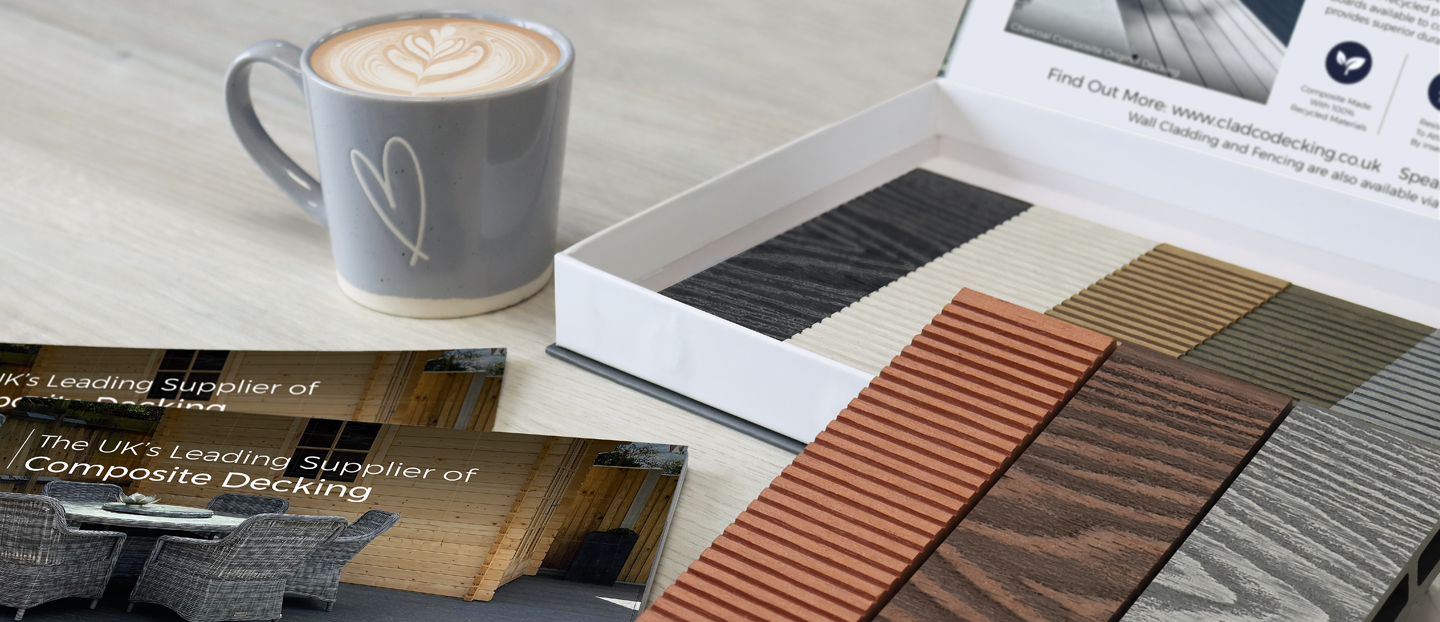As soon as the weather starts to warm up, most of us can’t wait to spend more time outdoors and enjoy our gardens. Whether that’s taking in some much-needed sun after months of being cooped up inside, enjoying a barbecue with family and friends, or simply relaxing in the fresh air with a drink or a good book, when the weather allows, our gardens quickly become valuable extra living space.
The thing that really helps turn these areas from outdoor spaces into places of comfort and relaxation — somewhere we actually want to spend our time — is our outdoor furniture. From dining tables to benches and chairs, we all need something that’s comfortable, low-maintenance, and fits with our outdoor space's style. That’s where the choice between recycled plastic and wooden furniture comes in.
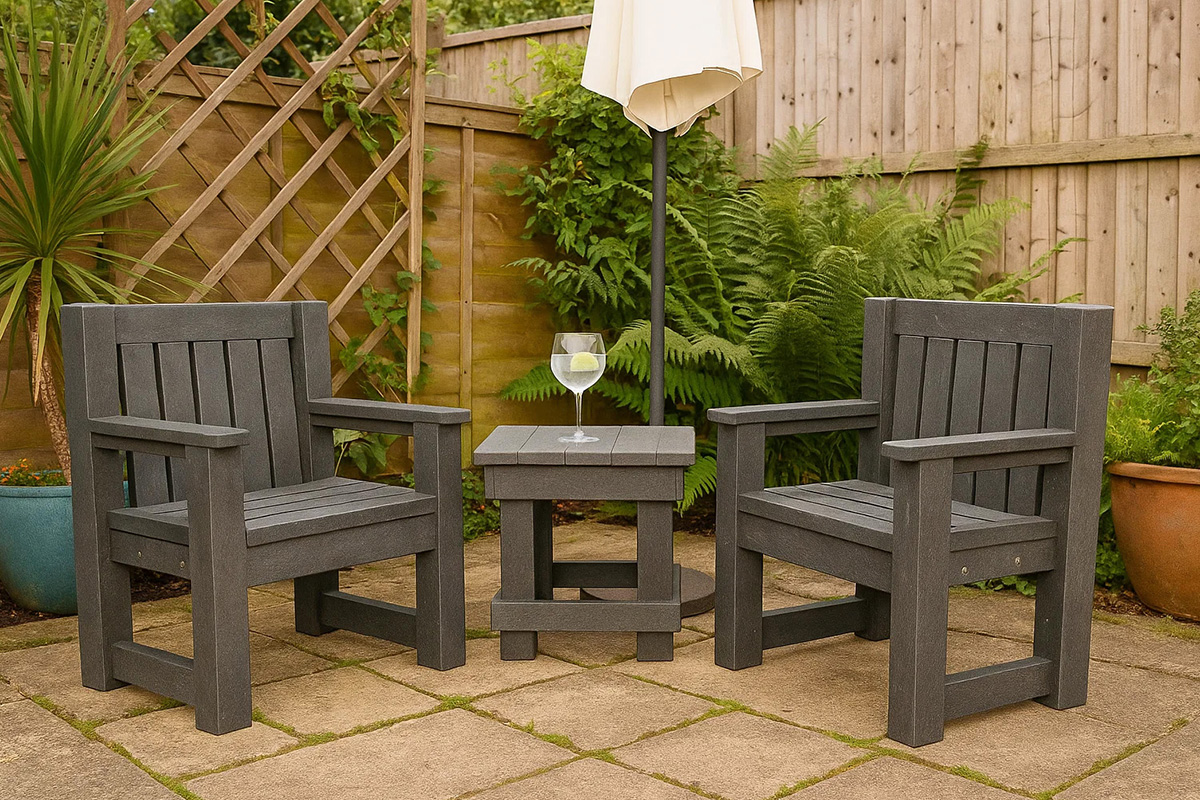

Wooden furniture has been a staple of British gardens for decades, but in this article, we’ll be taking a closer look at an increasingly popular newcomer: recycled plastic furniture. We’ll explore how the two compare in terms of price, style, strength, longevity, eco credentials, and comfort, helping you decide which is the best fit for you and your garden.
Article Contents
- Recycled Plastic Furniture vs Wooden Furniture: Pros and Cons
- Cost Comparison: Initial Price vs Lifetime Value
- Strength and Durability: Is Recycled Plastic Stronger Than Wood?
- Lifespan and Maintenance: How Long Does Recycled Plastic Furniture Last?
- Sustainability and End-of-Life Recyclability
- Comfort and User Experience
- Aesthetic Appeal and Design Flexibility
- Environmental and Health Considerations
- Decision Matrix: Choosing the Right Furniture for You
- Summary: The Verdict — Plastic or Wood?
- FAQs
Quick Summary
| Recycled Plastic Furniture | Wooden Furniture | |
|---|---|---|
| Durability | Extremely durable. Resistant to cracking, splitting, and rot. | Strong but can warp, crack, or rot over time. |
| Maintenance | Virtually maintenance-free. | Requires regular sanding, staining, or painting to protect from the elements. |
| Initial Cost | Slightly higher upfront cost. | Lower initial cost, though hardwoods can be more expensive. |
| Lifetime Value | Long-lasting and requires minimal upkeep. | Maintenance and potential replacement costs increase over lifespan. |
| Sustainability | Made from recycled plastics and fully recyclable at end of life. | Renewable if FSC®-certified but may require chemical treatments for durability. |
| Appearance | Consistent finishes and modern colours/styles. Lacks natural charm of wood. | Natural look and feel that develops character over time. |
| Heat Retention | May feel warmer in direct sunlight but cools quickly in shade. | Generally stays cooler, though darker finishes can retain warmth. |
| Weather Resistance | Fully weatherproof. Unaffected by rain, frost, or salt air. | Can swell or fade if not treated. Vulnerable to moisture over time. |
| Weight & Stability | Heavier and less likely to tip or move in strong winds. | Lighter. Easier to reposition but may need securing outdoors. |
| Lifespan | Typically over 25 years with little to no maintenance required. | Around 10–15 years, depending on wood type and care routine. |
As you can see in the recycled plastic vs wood furniture comparison table above, there are several areas, including appearance, durability, maintenance, and cost, where clear differences emerge between the two types of furniture material.
While we’ll look into each factor in more detail throughout the article, this quick summary highlights that both have their own key benefits and drawbacks. Ultimately, the best choice for you depends on your garden style, budget, and how you plan to use your outdoor space.
Recycled Plastic Furniture vs Wooden Furniture: Pros and Cons
If you’ve ever wondered which material is the better choice for your garden, you’re not alone — it’s something many of our customers ask us. In this section, we’ll take a closer look at the various recycled plastic furniture vs wooden furniture pros and cons to help you decide which option might be right for you.


Advantages of Recycled Plastic Furniture
- Eco-friendly: Made entirely from post-consumer plastic waste, giving used materials a new life and keeping them out of landfills.
- Longevity: Built to last for over a century, even when left outdoors all year round.
- Low-maintenance: No sanding, staining, or sealing required — just the occasional clean.
- Durability: Strong, resilient, and designed to withstand heavy use in both domestic and public spaces.
Disadvantages of Recycled Plastic Furniture
- Cost: Higher initial investment, but better long-term value thanks to its long lifespan.
- Aesthetics: Lacks the natural warmth and grain of wood, with a more modern, minimalist look.
- Choice: Fewer design options available compared to traditional timber, though this is improving.
Advantages of Wooden Furniture
- Aesthetics: Timeless natural beauty that complements plants, trees, and materials like sandstone or brick.
- Cost: Typically has a much cheaper upfront cost than recycled plastic alternatives.
- Choice: A wide range of designs, finishes, and bespoke options available to suit any style.
- Structural Integrity: Solid and sturdy, with a natural grain that provides excellent strength and load-bearing capability when properly maintained.
Disadvantages of Wooden Furniture
- Upkeep: Requires regular sanding, staining, or oiling to stay protected and looking good.
- Sustainability: Renewable but less eco-friendly overall due to long regrowth cycles and overseas transport.
- Lifespan: Even with proper care, wooden furniture usually lasts around 10 years before needing replacement.
Cost Comparison: Initial Price vs Lifetime Value
Upfront Price Comparison
Recycled plastic furniture vs wooden furniture price comparisons are an important consideration when deciding which type of outdoor furniture is right for you. Below is a table showing examples of how, despite the initial upfront cost, when that price is spread across its entire lifespan, recycled plastic furniture is comfortably the more cost-efficient.
| Furniture Type | Initial Price | Expected Lifespan | Approx. Cost per Year of Use |
|---|---|---|---|
| Recycled Plastic Bench | £529 | 120 years | = £4.40/year |
| Teak Wooden Bench | £249 | 10 years | = £24.90/year |
Ongoing Maintenance Costs
When it comes to maintenance, recycled plastic furniture requires virtually none. A quick wipe down with soapy water is usually all that’s needed to keep it looking new. Wooden furniture, meanwhile, demands regular maintenance. Sanding, staining, or oiling once or twice a year can cost around £20–£40 annually in materials alone, not to mention the time and effort involved. That means that over a 10-year period, that could add £200–£400 to the total cost of ownership, making recycled plastic the clear winner for long-term value and convenience.


Furniture Lifespan and Replacement Cycles
When comparing recycled plastic furniture vs wooden furniture, the difference in lifespan is one of the most striking differences. A high-quality wooden bench, for example, might last you around 10 years with consistent maintenance before it needs repairing or replacing. In contrast, a recycled plastic bench can last well over 100 years with virtually no upkeep required.
To put this into perspective, over 100 years, you could expect to replace wooden furniture at least 8 to 10 times, depending on the timber type and level of care. That means not only higher material costs over time, but also repeated maintenance, transportation, and disposal, all of which add to the overall environmental and financial impact.
| Furniture Type | Typical Lifespan | Number of Replacements (Over 100 Years) | Maintenance Required |
|---|---|---|---|
| Recycled Plastic | 100+ years | 0 | Minimal. Occasional cleaning only |
| Natural Wood | 8–12 years | 8–10 | Regular maintenance. Staining, oiling, and storage |
While wooden furniture offers you a nice short-term saving and plenty of natural charm to boot, recycled plastic provides unbeatable long-term value. With no replacement cycles and minimal maintenance, it’s a one-time investment that really does pay off year after year.
Cost Modelling Scenarios (10-Year and 25-Year Examples)
As impressive as talk of 100-year lifespans is, you could be forgiven for wondering how likely it is that anyone buying garden furniture in 2025 can realistically imagine it still being used in 2125, or use that kind of ultra-long-term thinking to justify a purchase. So instead, let’s focus on something a little more practical: how do the numbers compare over 10 and 25 years, and what is the true cost?
Let’s imagine two homeowners purchasing similar standard two-seater garden benches, but one chooses recycled plastic costing £529, while the other opts for traditional wood, costing £249.
After 10 years, the wooden bench will likely be nearing the end of its life. Including constant upkeep, it may have cost around £500, while the recycled plastic bench remains at its original price of around £529 and still looks much the same as the day it was bought.
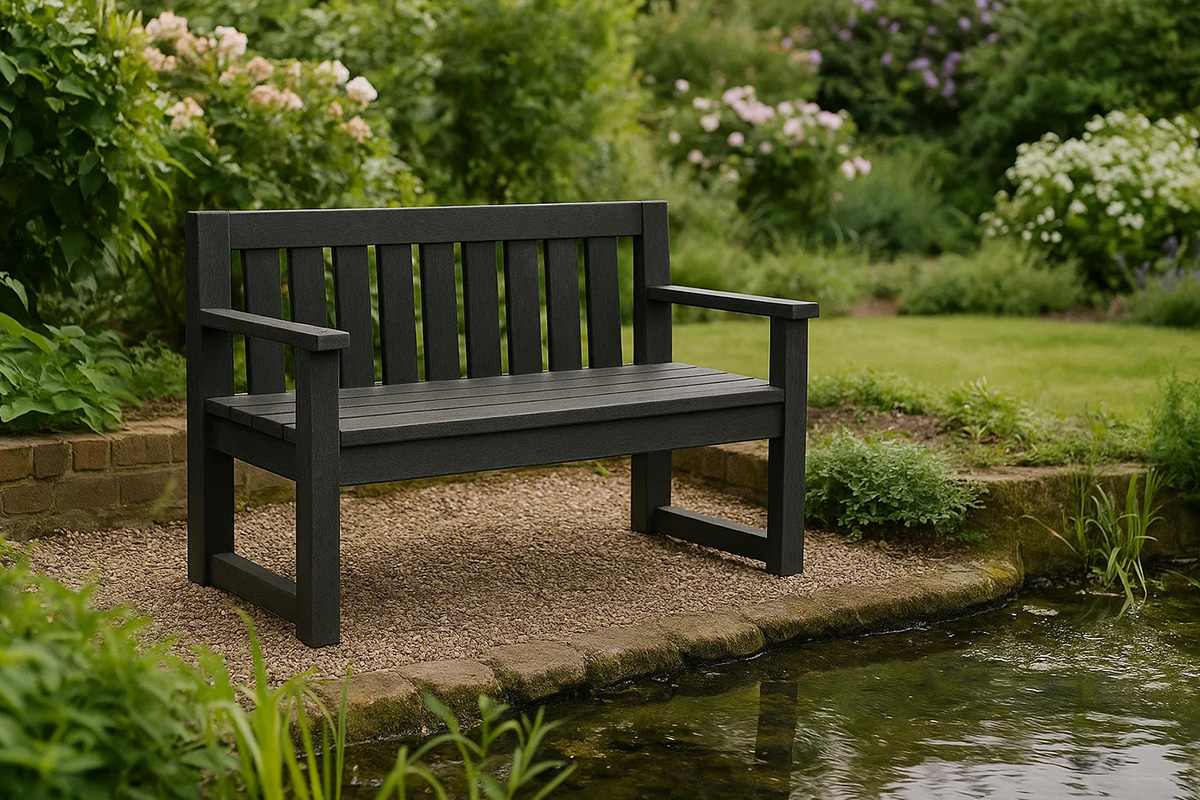

Fast-forward 25 years, and the difference becomes even clearer. The wooden bench owner will have had to replace their bench twice and spent a lot of money (around £1,300–£1,400 in total) on replacements and maintenance. The recycled plastic bench, originally purchased for around £529, continues to perform without additional costs, making it the far more cost-effective choice in the long run.
Strength and Durability: Is Recycled Plastic Stronger Than Wood?
Whether you’re buying outdoor furniture for your garden at home or for public spaces such as parks, nature reserves, or a bar or restaurant's outdoor dining area, strength and durability are key considerations. Nobody wants seating that bows under weight or tables that warp after a few winters.
Material Composition and Load Strength
When comparing materials for outdoor furniture, strength and structural integrity are key factors to consider. Both wood and plastics offer impressive performance, but in different ways.
When comparing HDPE (high-density polyethylene) vs hardwood, HDPE has a maximum tensile strength of around 30 to 40 MPa (MPa stands for megapascals, a unit of pressure), while timber, depending on the species and how it’s treated, can range anywhere from 70 MPa to over 500 MPa.
So, is recycled plastic stronger than wood?
The short answer is no. Recycled plastic is a composite material made from recycled materials such as drinks bottles and crisp packets, whereas wood is a dense, natural material with a consistent grain structure that gives it exceptional strength.
Recycled plastic furniture typically has a maximum tensile strength of 10 to 50 MPa, considerably lower than most natural woods. At Cladco, our 100% recycled plastic furniture achieves a mean score of 16.8 MPa, tested to standards BS EN ISO 527-1:2019 and BS EN ISO 527-2:2012.
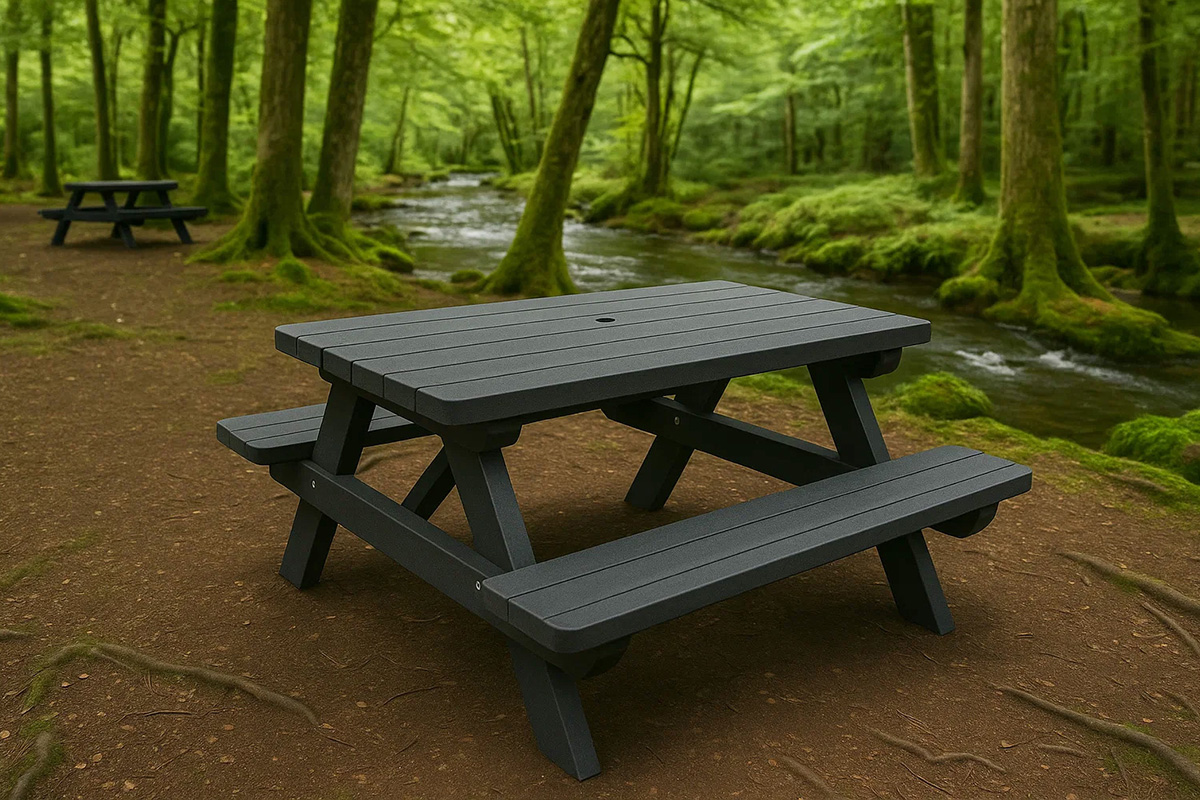

That said, a lower tensile strength doesn’t mean the furniture isn’t fit for purpose. When used as intended, recycled plastic furniture easily withstands everyday use in both residential and commercial settings. Many items of furniture, including our own, octagonal 8-seater recycled plastic picnic table, are designed to seat up to eight adults in complete comfort. Proof that this material is far from flimsy.
Weather Resistance (Rain, UV, Frost, Salt)
As we’ve already covered, untreated timber furniture can begin to deteriorate very quickly. This process accelerates when it’s exposed to the elements. Rain, frost, and UV rays can all take their toll, causing the wood to swell, fade, or crack over time. In coastal areas, salt in the air acts as a corrosive, further damaging the timber unless it has been properly treated during manufacturing.
Recycled plastic, on the other hand, is fully weatherproof. Because it contains no natural fibres or organic components, which are the parts most vulnerable to decay, it’s unaffected by water, freezing temperatures, or sea air. Whether placed in a shaded garden environment, a sunny terrace, or a seaside location, recycled plastic furniture can withstand year-round exposure without deteriorating in performance or appearance.
Impact Resistance and Structural Stability
Natural wood is well known for its strength and solid structure, but it can still be prone to dents, chips, and scratches if not properly maintained, especially pieces with a smooth, polished finish.


Recycled plastic furniture, by contrast, offers excellent impact resistance. Its slightly softer composition and rugged surface help it withstand knocks, scuffs, and everyday wear far better than timber. At Cladco, our recycled plastic furniture even features an anti-vandal design, making it a particularly practical choice for public spaces, schools, and other high-traffic environments.
Lifespan and Maintenance: How Long Does Recycled Plastic Furniture Last?
Expected Lifespan Outdoors
While earlier we looked at the general lifespan of wooden and recycled plastic furniture, it’s worth considering how each material performs specifically when left outdoors all year-round.
Recycled plastic furniture is designed to withstand continuous exposure to the elements without deteriorating. Even when installed permanently outside, it can last for well over 100 years, retaining both its structure and appearance with minimal maintenance.
Wooden furniture, on the other hand, tends to show signs of ageing much sooner. Even with regular treatment, exposure to moisture, frost, and UV rays can lead to fading, warping, or rotting over time. In average UK conditions, outdoor wooden furniture generally lasts around 8–12 years, depending on timber type and level of care.
So, while both materials can offer years of reliable use, recycled plastic clearly outperforms wood when it comes to long-term durability outdoors, making it a more practical option for those who prefer to install and forget all about maintenance.
Maintenance Requirements for Each Material
As we’ve already discovered, recycled plastic furniture has an exceptionally long lifespan, easily lasting well over a century even when left outdoors year-round. Its resilience against rain, frost, and sunlight means it needs virtually no maintenance beyond the occasional clean.
Wooden furniture, by contrast, needs regular attention to maintain both its appearance and structural integrity. Depending on the timber type, this might include sanding, oiling, or staining once or twice a year, and protecting the furniture with covers during bad weather. Neglecting these steps can quickly lead to fading, splitting, or rot.
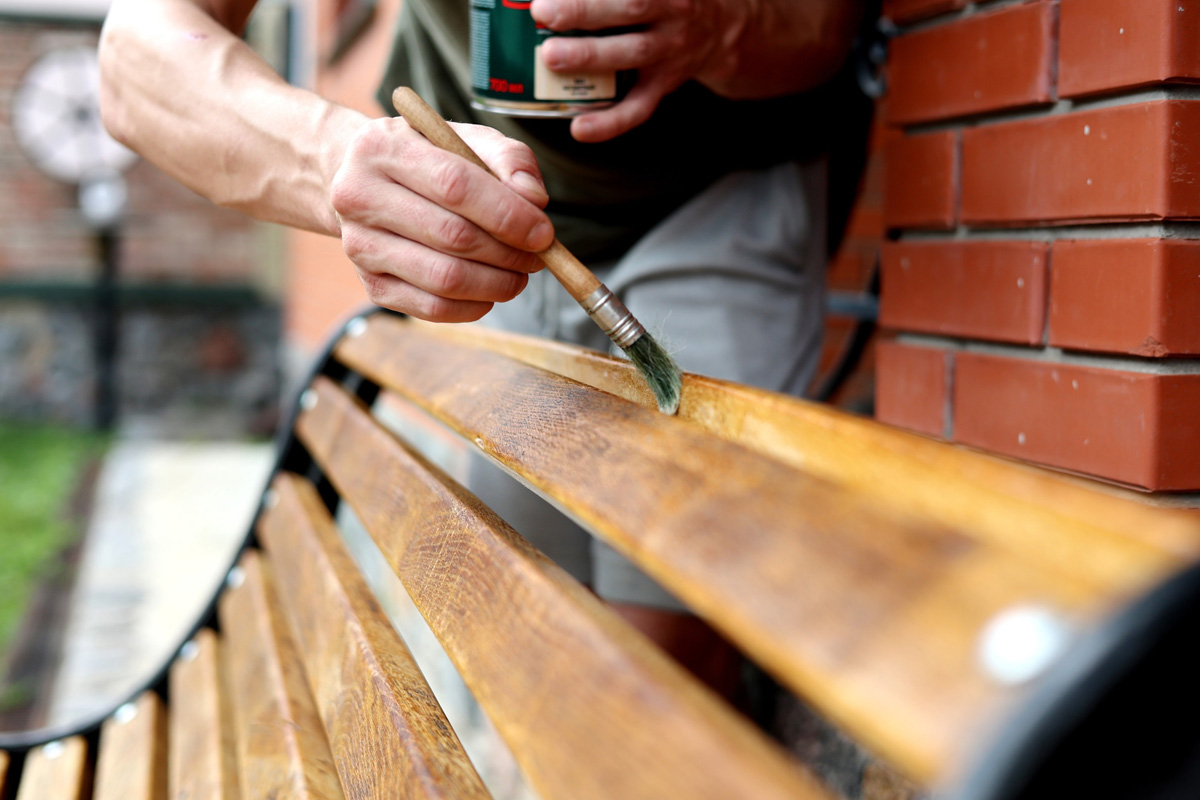

In short, recycled plastic furniture offers a truly hassle-free experience, while wooden furniture requires ongoing care to keep it looking its best.
Factors That Affect Longevity (Climate, Use, Storage)
Climate: Constant exposure to moisture, frost, and strong UV rays will quickly shorten the lifespan of wooden furniture unless it’s regularly treated and maintained. Recycled plastic, meanwhile, is unaffected by temperature changes or moisture, making it an excellent choice for coastal, exposed, or high-humidity environments. Unlike timber, it's also particularly well-suited to areas prone to flooding or frequent saturation, such as riverside cafés and pub gardens.
Use: Furniture that’s frequently moved, used by large groups, or installed in public spaces inevitably experiences more wear and tear. In these situations, recycled plastic’s impact resistance and low-maintenance design help it stay looking newer for much longer than wood.
Storage: Storing furniture indoors during winter or prolonged bad weather can significantly extend the life of wooden pieces. That said, unless your home has ample storage space, shielding large items from the elements can be a real challenge. Recycled plastic furniture doesn’t need to be brought indoors, though keeping it clean and free from debris will help maintain its appearance for years to come.
Real-World Examples (Schools, Parks, Hotels)
Furniture manufactured from hardwood has long been the go-to when it comes to outdoor furniture. Recycled plastic furniture, however, has now become one of the most popular options across both public and commercial settings, combining strength with a low-maintenance design and various other benefits. Here are some real-world examples:
Schools/Colleges: In busy playgrounds and recreational areas, recycled plastic benches and picnic tables are ideal for coping with constant daily use, from dining to studying. While timber benches cost less money upfront, they are prone to vandalism and damage. Recycled plastic furniture is easy to clean, safe for children, and doesn’t splinter or crack like wood.
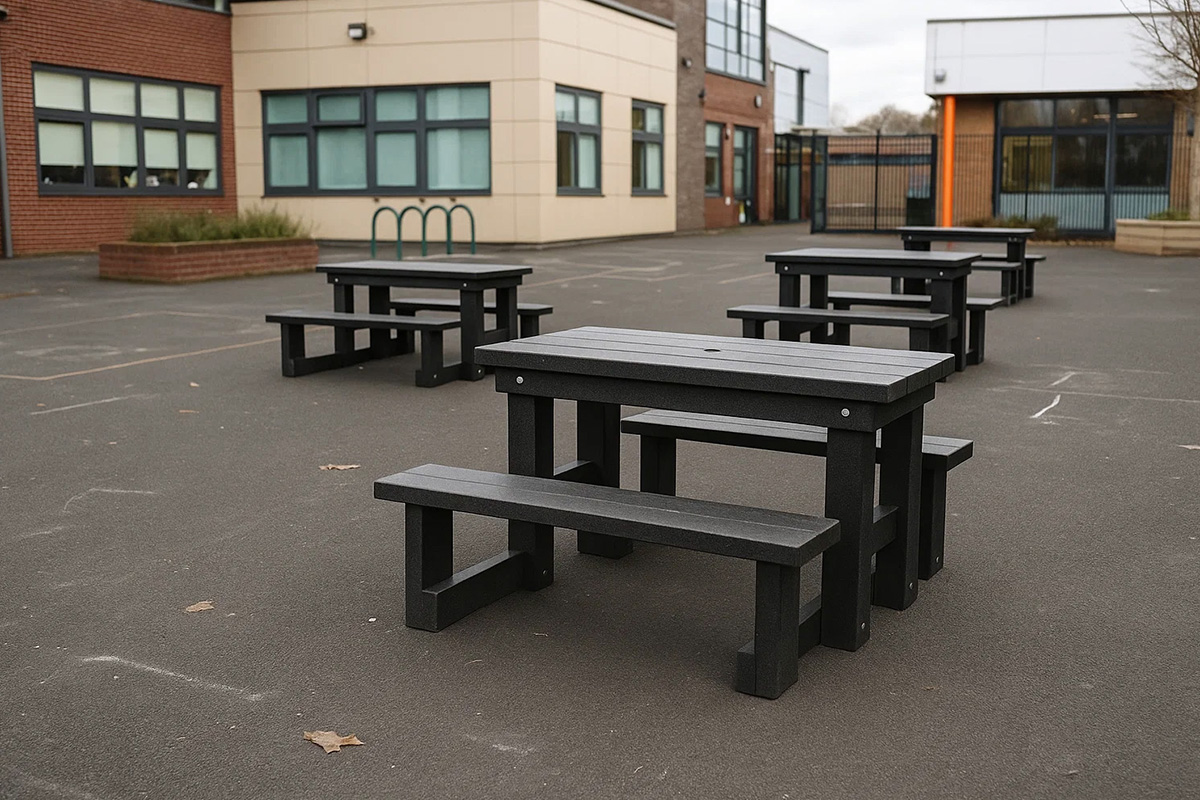

Parks and Public Spaces: Local councils and nature reserves often favour recycled plastic furniture for its durability, long-term benefits and resistance to vandalism. It can withstand heavy use, harsh weather, and exposure to moisture without rotting or fading. Timber furniture does look the part, but when left in exposed environments, such as moorland or forested areas, it can require replacing every few years.


Hospitality: When furnishing outdoor seating areas in hotels, restaurants, cafés, and other hospitality settings, appearance matters as much as performance. While recycled plastic furniture offers a long-lasting solution, wooden furniture will provide a high-end charm with far more variety in terms of design.
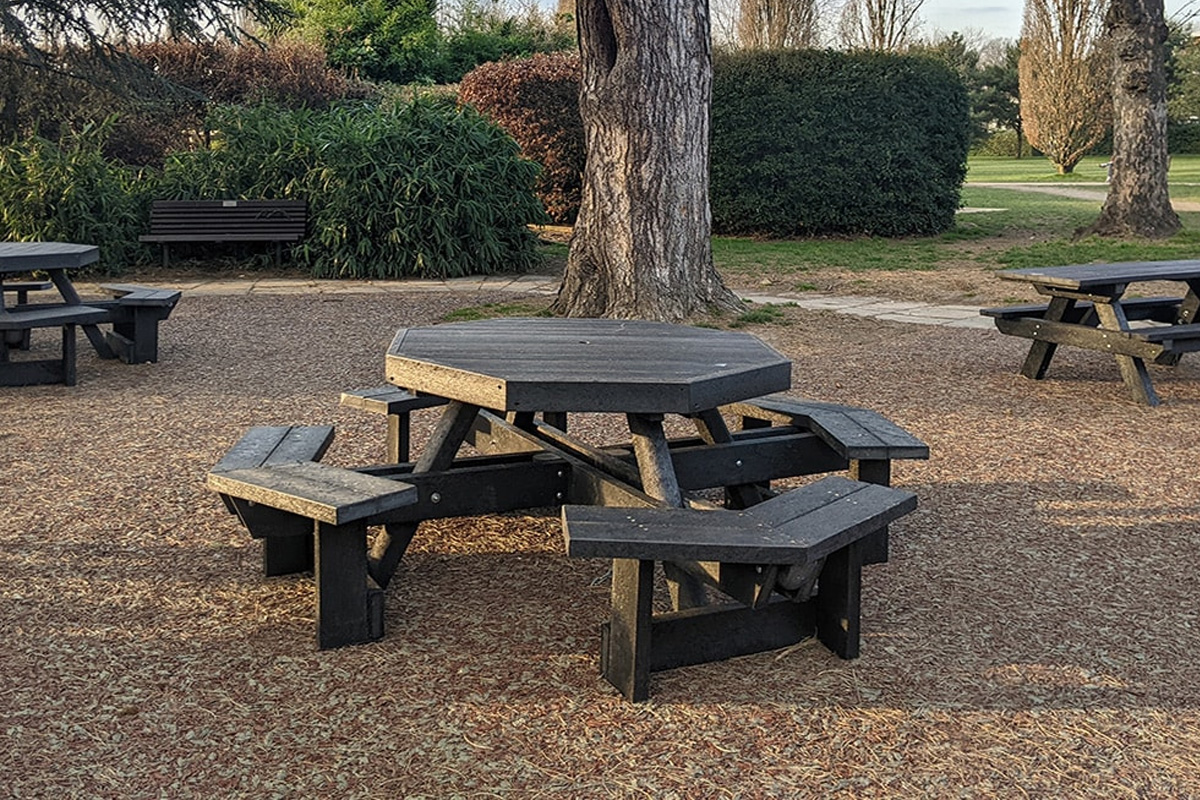

Sustainability and End-of-Life Recyclability
Circularity and Second-Life Recycling
Recycled plastic furniture is made from post-consumer materials, such as plastic bottles and food packaging, giving waste a valuable second life. At the end of its use, many products can be recycled again to create new items, helping to close the loop on plastic waste. Wooden furniture, while not part of a recycling loop in the same sense, can often be repaired, reused, or even repurposed, giving it its own form of circularity.
FSC®-Certified Wood vs Post-Consumer Plastic


When responsibly sourced, such as FSC®-certified wood, timber is a renewable and sustainable material. It stores carbon during growth, and when managed correctly, new trees can be planted to replace those harvested. Recycled plastic, on the other hand, makes use of existing waste, reducing demand for virgin materials like plastic and steel. Both approaches support sustainability, one through responsible forestry, the other through reuse and waste reduction.
Disposal, Waste, and Carbon Footprint
Compared to virgin plastics or metal furniture, which require large amounts of energy to produce and generate a significant carbon footprint, both wooden and recycled plastic furniture offer far more eco-friendly alternatives.
End-of-life recyclability means that, at the end of its life, wooden furniture can usually be recycled, repurposed into new items, or even used as firewood. This is all provided the wood hasn’t been treated with paints, oils, or preservatives that make it unsuitable for burning or recycling. Recycled plastic furniture can also be reprocessed, although this depends on local recycling facilities and how this relatively new material is sorted.


Transport is another important factor when considering your furniture's carbon footprint. Timber imported from countries such as Canada, the USA, or Brazil carries a higher environmental impact due to the distances involved. By contrast, plastic furniture produced domestically from locally sourced waste — such as Cladco’s recycled plastic furniture — is an eco-friendly option that helps keep emissions low and supports a more sustainable, circular supply chain.
Which Is More Sustainable Long-Term?
Both materials can help contribute towards a more sustainable future and possess strong green credentials when sourced or produced responsibly. Wooden furniture is renewable and biodegradable, while recycled plastic is an eco-friendly alternative that reduces waste and requires very little maintenance throughout its exceptionally long lifespan. Ultimately, the best option depends on personal priorities. If you value the charm and allure of natural materials, wood is a great choice. For those seeking long-term durability and a lower overall environmental impact, though, recycled plastic often proves to be the more sustainable solution.
Comfort and User Experience
Heat and Cold — How Each Material Feels in Different Weather
Thermal behaviour plays a significant role in user comfort. Wooden furniture generally stays cooler in hot weather and doesn’t retain as much heat, making it a more pleasant experience when using your furniture on those warm sunny days. In comparison, recycled plastic can feel warmer to the touch in direct sunlight, but it does cool quickly once shaded. Also, unlike metal furniture, it won't become too hot or cold to use comfortably.
Tactile Qualities and Natural Appeal
The organic texture and grain of natural timber provide tactile qualities that many people associate with comfort and authenticity. It feels smooth, warm, and inviting, particularly when finished to a high standard. Recycled plastic furniture tends to have a slightly smooth finish but with a more rugged appearance. While this may not appeal to those wanting a luxury, high-end finish, it does mean any bumps, scrapes and everyday wear are far less visible on the surface.
Design Flexibility and Ergonomics
While recycled plastic can, in theory, be moulded into a wide range of shapes and designs, the reality is that far fewer manufacturers currently work with this material compared to traditional wood. As a result, the variety of styles and finishes available remains limited at the moment.
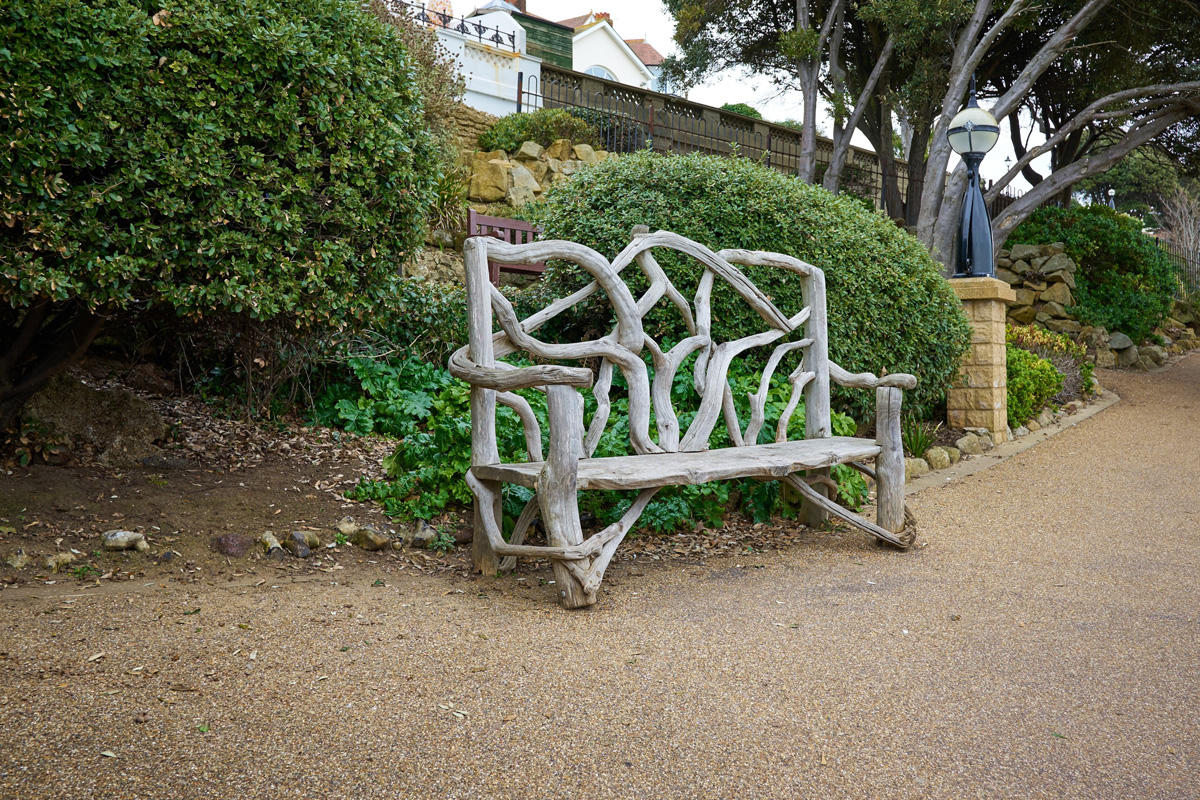

Wood, on the other hand, benefits from a vast network of skilled carpenters and furniture makers. Its versatility and ease of working mean that, for now at least, you’ll find a much broader choice of designs, from rustic, traditional to intricate, bespoke pieces. So, while recycled plastic has strong potential for innovative design, wooden furniture still leads the way in terms of variety and availability. Give it a few more years, though, and recycled plastic options will likely rival timber.
Aesthetic Appeal and Design Flexibility
Natural Look and Feel of Wood
The unmistakable smooth texture and natural woodgrain of hardwood furniture are key reasons why wooden furniture remains such a popular choice for our outdoor spaces. Its organic grain patterns, warm tones, and subtle variations between each piece of timber make every item unique. Over time, untreated timber develops a gently weathered look full of character and charm, while those who prefer a more refined appearance can sand, paint, or stain the surface to preserve its original beauty.
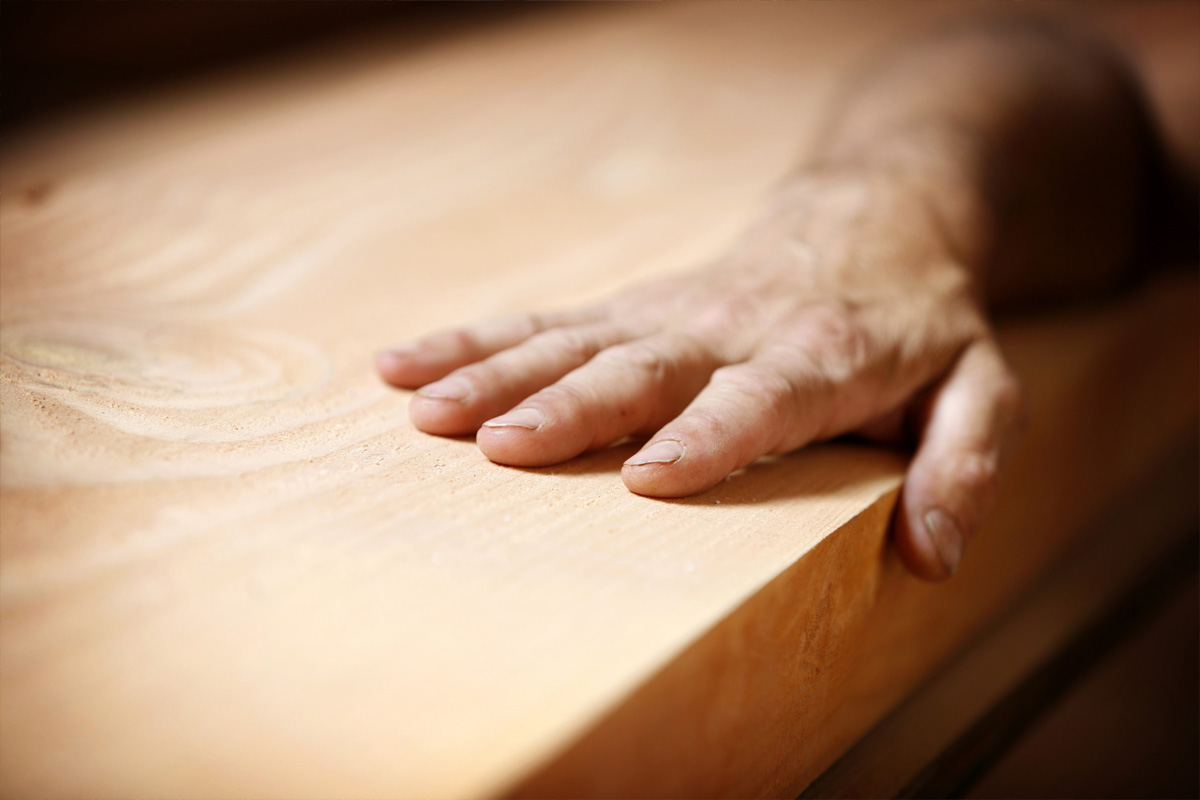

Modern Design Options for Recycled Plastic
Recycled plastic furniture offers a bold, contemporary look that makes it a great solution for modern homes, urban spaces, and commercial environments. While design choice is currently more limited than with timber, its moulded construction allows for consistent shapes and attractive finishes that don’t warp or split. The colour runs consistently throughout the plastic material, too, so there’s no flaking or peeling paint to worry about, which is ideal for low-maintenance outdoor installations.
Colour, Texture, and Finish Variations
When it comes to surface finish, recycled plastic furniture is built for long-lasting consistency, resisting fading, cracking, and other effects of weather exposure. Wooden furniture, by contrast, naturally changes as it ages, giving each piece a distinctive and evolving character. Regular sanding, oiling, or painting can help slow this process, but as the timber begins to deteriorate, weathering becomes increasingly noticeable and harder to conceal.
Both materials are finished to a smooth surface for comfort and, in the case of wood, to prevent splinters. However, while wooden furniture can suffer from wear, insect damage, or rot if not properly maintained, recycled plastic tends to retain its clean, like-new appearance for many decades with minimal effort.
Environmental and Health Considerations
Microplastics and UV Degradation
A major environmental concern surrounding plastic products is the potential release of microplastics over time. Research in recent years has shown that these tiny particles can cause significant harm to ecosystems, as they do not break down further and can be ingested by small creatures and marine life.
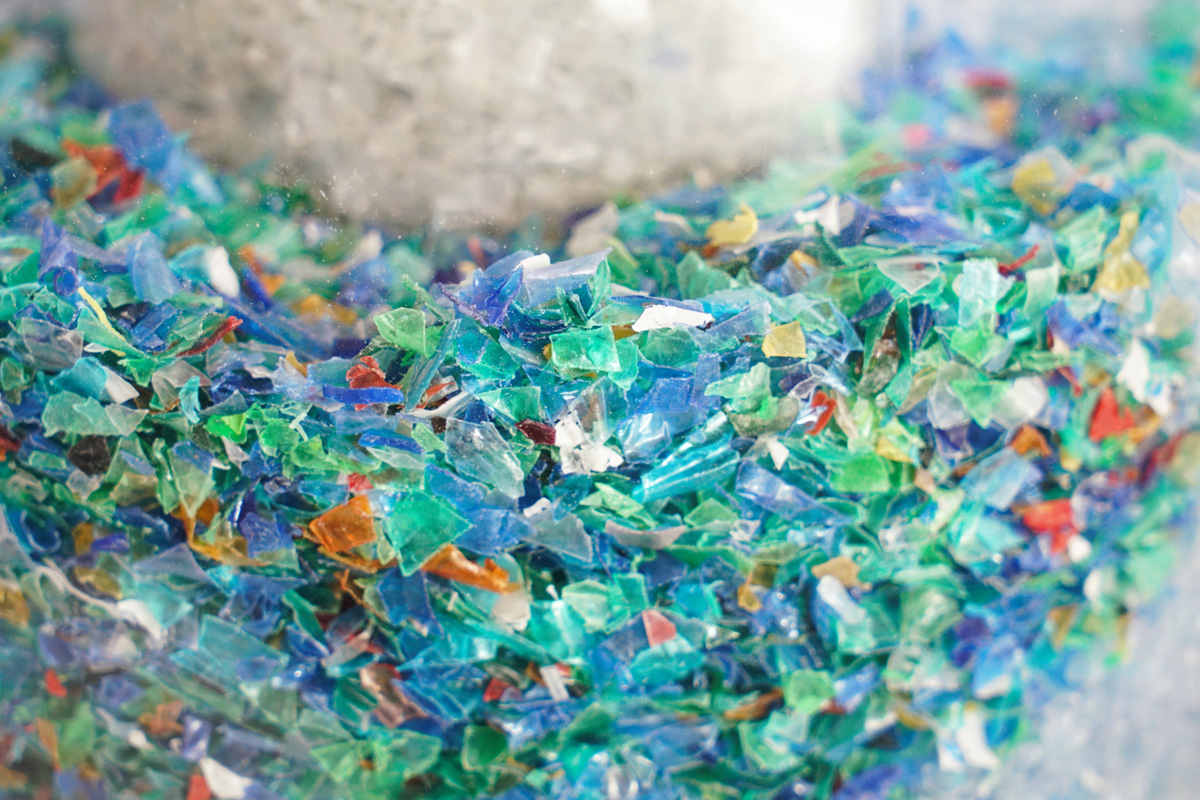

High-quality recycled plastic furniture, however, is designed to resist cracking and surface breakdown, significantly reducing this risk. UV stabilisers are often added during production to enhance UV protection and prevent fading and brittleness. By contrast, wooden furniture naturally breaks down into organic matter rather than microplastics.
Chemicals in Wood Treatments and Paints
To protect wooden furniture from the effects of weathering, it’s common practice to apply stains, paints, or oils. Many of these contain chemicals that can release volatile organic compounds, often referred to as VOCs. These are gases that can cause health issues, such as dizziness, headaches, and even respiratory problems when inhaled in high concentrations. In recent years, environmentally-friendly and low-VOC finishes have been developed, but they often need to be reapplied more frequently to remain effective.
Safe Plastics and Certified Manufacturing
Modern recycled plastic furniture is produced using certified, non-toxic materials and manufacturing processes that meet strict environmental standards. At Cladco, for instance, all recycled plastic products are made from 100% post-consumer soft plastics, such as food packaging and films, and contain no harmful additives or dyes. Wooden furniture, while comprising natural materials, may still be treated or finished with chemical preservatives. This means choosing FSC®-certified and responsibly manufactured products is essential to minimise environmental impact.
Decision Matrix: Choosing the Right Furniture for You
As this article has shown, there are many factors you need to consider, from cost and maintenance to environment and aesthetics, when choosing between recycled plastic and wooden furniture. But don't feel bad if the decision-making process still feels like a bit of a challenge. There's a lot to take in!
To help you, this simple decision matrix highlights the key considerations to help you decide which material best fits your needs and priorities.
Key Considerations: Budget, Aesthetics, Climate, Maintenance
When weighing up your options, try and think about how you plan to use your outdoor space and what matters most to you. Such as:


Budget: Wooden furniture generally costs less upfront, while recycled plastic offers better long-term value.
Aesthetics: Wood delivers a warm, traditional look that blends with natural surroundings; recycled plastic offers a clean, modern appearance with consistent finishes.
Climate: In coastal or wet environments, recycled plastic performs best thanks to its weatherproof design. Wood tends to fare well in milder, drier climates when properly maintained.
Maintenance: Wooden furniture requires regular treatment and storage during colder months, whereas recycled plastic is virtually maintenance-free.
Example Scenarios (Home Garden, Public Park, Commercial Patio)
Home Garden: If you’re a fan of the traditional look and don’t mind a bit of annual maintenance, wooden furniture fits beautifully into natural garden settings.
Public Park: Recycled plastic is ideal for heavy public use. It’s vandal-resistant, easy to clean, and built to withstand all types of weather.
Commercial Patio: Do you own a restaurant, café, or hotel? If so, recycled plastic offers a consistent, professional finish and low upkeep, while wood creates a charming, homely atmosphere for guests.
Decision Matrix Table: Which Material Fits Your Priorities?
| Priority | Best Choice | Reasoning |
|---|---|---|
| Lowest Upfront Cost | Wood | Generally cheaper to buy initially. |
| Best Long-Term Value | Recycled Plastic | No maintenance or replacement costs over its lifetime. |
| Natural Appearance | Wood | Its warm tones and organic texture suit traditional settings. |
| Modern or Urban Look | Recycled Plastic | Sleek, consistent, bold design works well in contemporary spaces. |
| Wet or Coastal Climate | Recycled Plastic | Fully weatherproof, resistant to salt air, and quick drying. |
| Low Maintenance | Recycled Plastic | Needs only occasional cleaning. |
| Eco-Friendly Credentials | Recycled Plastic | Made from waste materials and fully recyclable. |
| Craftsmanship Appeal | Wood | A wide range of handmade and bespoke options is available. |
Summary: The Verdict — Plastic or Wood?
Well, it’s fair to say we’ve covered a lot throughout this guide, from cost and durability to sustainability and style. By now, you should have a good sense of which material best suits your needs.
Both recycled plastic and wooden furniture have their place in outdoor spaces, each offering its own benefits depending on what matters most to you.
If you’re looking for furniture that combines long-term durability with minimal maintenance, recycled plastic is the clear winner. It’s weatherproof, resistant to wear, and offers excellent sustainability credentials thanks to its use of post-consumer waste and fully recyclable design.


If, however, you value the natural warmth and character that only real wood can provide, then traditional wooden furniture remains a timeless choice, particularly for those who don’t mind a little extra upkeep.
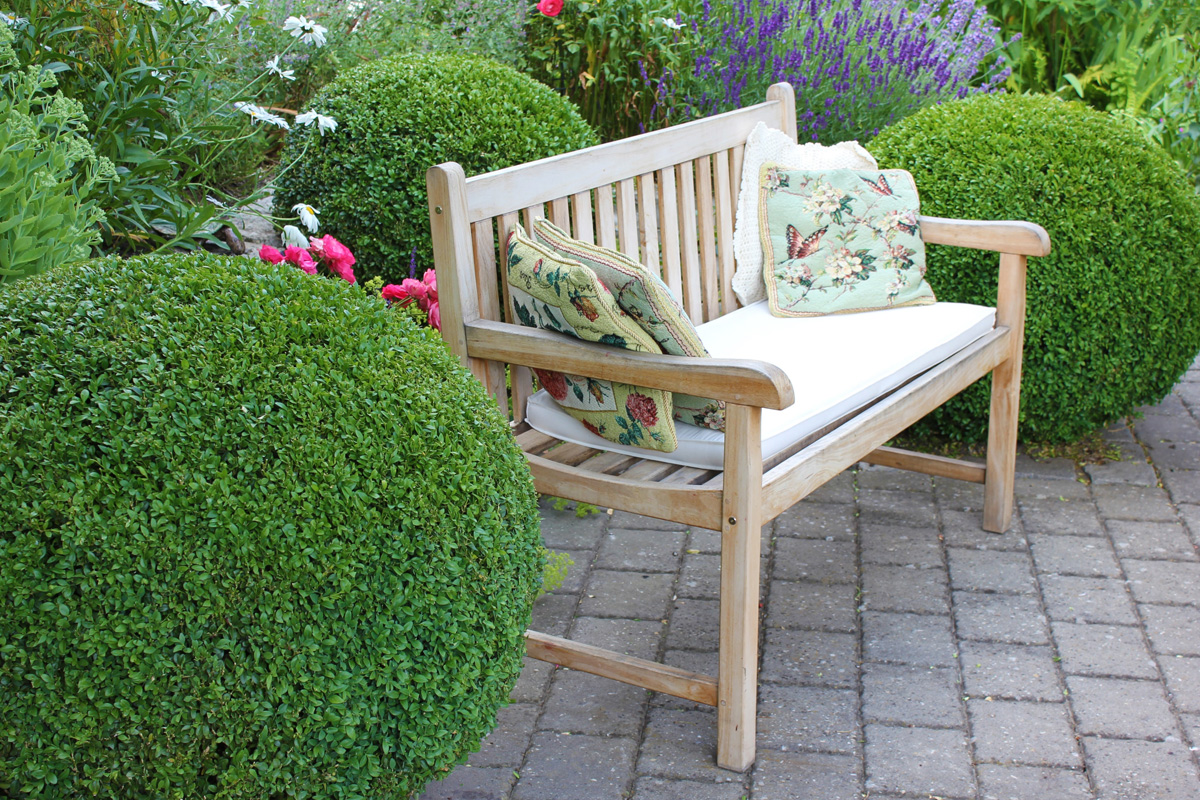

So, in conclusion:
- Best for longevity: Recycled plastic
- Best for a natural look: Wood
- Best overall sustainability: Recycled plastic
Whichever you choose, investing in quality, responsibly made furniture will ensure your outdoor space looks great and performs beautifully for many years to come.
FAQs
Is recycled plastic furniture better than wood?
It depends on what you value most. Recycled plastic furniture lasts far longer and needs almost no maintenance, while wooden furniture offers a natural look and traditional charm but requires regular care.
What are the disadvantages of plastic furniture?
Recycled plastic furniture tends to cost more upfront and has fewer design options than wood, but it’s extremely durable, low-maintenance, and long-lasting.
How long does recycled plastic furniture last?
With minimal upkeep, recycled plastic furniture can last well over 100 years, even when left outdoors year-round. Our range is designed to last up to 125 years.
Can recycled plastic furniture be recycled again?
Yes. At the end of its use, recycled plastic furniture can be reprocessed to create new products, helping to keep materials in circulation and reduce waste.
Does wooden furniture last outdoors?
Yes, but only with proper maintenance. Regular sanding, staining, or oiling can help wooden furniture last around 10 years before it needs replacing.
View our range of recycled plastic furniture today.
Last Updated: November 13, 2025
Please note all information is correct at the time of writing. However, we encourage you to do your own research to ensure it remains accurate and relevant to your needs.




